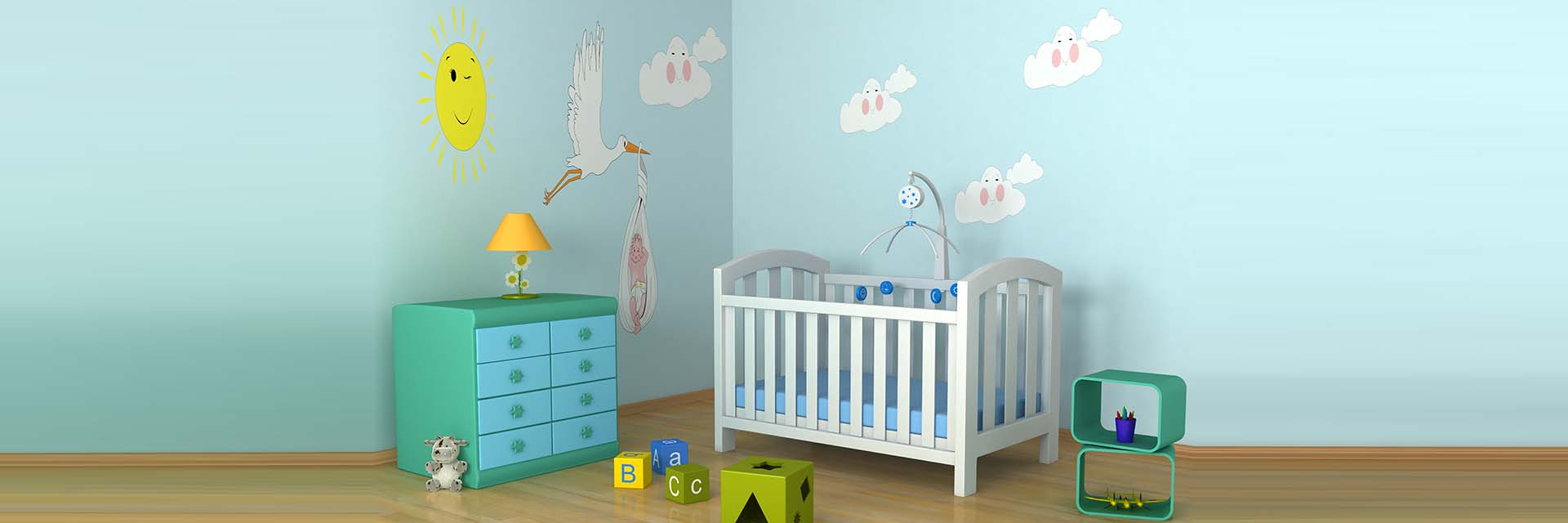A 2014 study in the medical journal Pediatrics revealed that researchers from the National Institutes of Health as well as the Centers for Disease Control and Prevention found that in a sample of nearly 20,000 parents conducted in 2010, more than half were still using bumpers, quilts and other bedding in cribs — despite a campaign by the NIH, the CDC and pediatricians nationwide to educate parents on the dangers of these items.
An even newer study published in Pediatrics in 2016 was based on videos recorded in 160 children’s homes. It found that 91 percent of 1-month-old babies had been placed in cribs with unsafe bedding.
In October, the American Academy of Pediatrics recommended that infants sleep in the same room as their parents for at least the first six months — preferably for the entire first year of life — but in a separate crib or bassinet.
“Infants should sleep in the same bedroom as their parents — but on a separate surface, such as a crib or bassinet, and never on a couch, armchair or soft surface — to decrease the risks of sleep-related deaths,” the AAP said.
So what kind of bedding should be used?
Angela Mix, D.O., a pediatrician on the medical staff at Texas Health Presbyterian Hospital Plano, tells the parents of her patients that baby bedding should be minimal.
“A crib or bassinet can serve as the infant’s bed,” she said. “Use a firm mattress only and a fitted sheet. Bumpers should never be used due to the risk of death, strangulation, suffocation, and SIDS. This also applies to breathable bumpers.”
“As the infant learns to pull to stand, put the mattress at the lowest setting,” she added. “And never prop your baby with pillows or other bedding. This includes ‘boppy pillows.’”
And while that much-loved stuffed animal or blanket — a lovey, if you will — might be cute to encourage, Mix said it shouldn’t be allowed at night until after a year.
“The SIDS risk is highest under 12 months old, so I generally do not advise a ‘lovey’ until then,” she said. “I also tend to have them avoid pillows until age 2.”
And what happens if you’ve already bought the adorable bedding?
“I tell parents to take it back and exchange it for something else — you can buy a lot of diapers in place of crib bedding!” Mix said. “Certainly pretty sheets, painted cribs and letters, or art on the wall can add to the aesthetics of one’s nursery.”
This movement away from even breathable bumpers can be seen as new information to some. The American Academy of Pediatrics initially (in 2005) recommended using bumpers that were thin, anchored to the crib and not “pillow-like.” However, more recent studies spurred the organization to pull any recommendation for bumpers — including breathable bumpers — because the risk outweighed any minimal benefit.
So why do parents still buy them? In addition to aesthetics, many have told researchers that they thought it was a safety decision — that a baby’s leg might get caught between the slats, or that the baby would hit its head.
According to Parent’s magazine, bumpers were first created to cover the spaces between crib slats to prevent babies from falling out or getting stuck. But since the 1970s, new regulations require cribs to have only 2 ⅜ inches between slats.
Consumer Reports and other experts recommend blanket sleepers or sleep sacks (also known as wearable blankets) — depending on the developmental stage of the baby — if you’re concerned with keeping the baby warm in the winter months. The magazine also said that adding a dust ruffle to the crib would be another way to add some decor without endangering the baby, and it suggested placing that adorable quilt on the back of a rocker or glider.
The Consumer Product Safety Commission also gives a rundown of nursery do’s and don’ts, which include avoiding the use of a pillow or sleep positioner, securing the cords for window blinds and shades, tethering furniture to the wall to avoid tipping and falling onto a climbing child, arranging furniture away from cords to lamps or baby monitors, and keeping toys out of cribs.
Are you getting ready for a baby? Need a pediatrician? It’s as easy as calling 1-877-THR-WELL.

